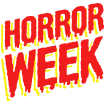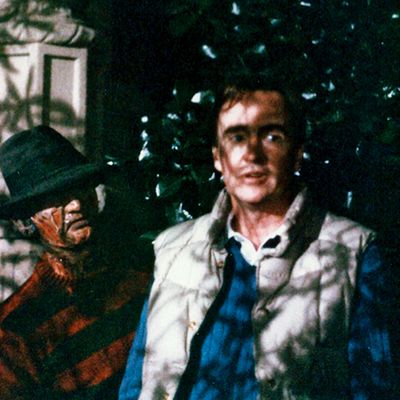
With Halloween looming menacingly on the horizon, we’re taking this week on Vulture to celebrate horror in all its gory, terrifying forms. First up, an oral history of one of the genre’s game-changing classics.
“Great horror films don’t win Academy Awards,” says horror auteur Wes Craven. Instead, they make money. Thirty-odd years ago, Craven, who’d eventually go on to direct Scream, had an unusual idea for a movie, inspired by a newspaper story about a boy who suffered from horrible nightmares and then died mysteriously in his sleep.
After all the major studios passed on his script, Craven met New Line Cinema’s Bob Shaye, an erudite film-industry hustler. Their A Nightmare on Elm Street, released in November 1984, would become one of the most important and lucrative franchises in film history: It helped restore the evil monster — in this case, the striped-sweater-wearing, dream-haunting, pizza-faced killer Freddy Krueger — to top billing in fright films; spawned eight sequels that, along with the original, grossed a cumulative $370 million; turned New Line into an industry powerhouse; and even launched the career of a young actor named Johnny Depp.
Here, the film’s prinicipals recount its ignominious beginnings, mishap-plagued production, and, of course, unkillable afterlife.
Wes Craven (writer and director, A Nightmare on Elm Street): In the ‘60s, I was teaching humanities at a college in upstate New York and trying to publish a novel I’d written in graduate school. But nothing was happening. So I moved to New York City and got a job as a messenger at a place that made movies. A friend, Sean Cunningham, who went on to do Friday the 13th, was given a small budget to produce a scary movie, and he told me to write something. I’d never seen a horror film in my life; I’d fallen in love with Fellini. I told Sean I didn’t know what to write. He said, “You were raised as a fundamentalist; pull that stuff out of your closet.” That became Last House on the Left. My second film, The Hills Have Eyes, received good reviews. I got some TV-movie-of-the-week work and did Swamp Thing, but it didn’t make much money. After that, I couldn’t get any work. No paycheck for three years. I lost my house. I had to borrow money from Sean to pay my taxes. Also, my first marriage had failed, and I was smoking a lot of grass, then graduated to cocaine. Finally, I walked away from the drugs. And I had this one idea, so I set off to write a script.
Mimi Craven (Wes Craven’s second wife, 1982–1987): We were living in Venice, and Wes had a studio in the back. He’d be there in his bathrobe and a pith helmet, banging on the computer. And oh my God, it was a wonderful script. Even though it was a horror film.
Craven: I’d read an article in the L.A. Times about a family who had escaped the Killing Fields in Cambodia and managed to get to the U.S. Things were fine, and then suddenly the young son was having very disturbing nightmares. He told his parents he was afraid that if he slept, the thing chasing him would get him, so he tried to stay awake for days at a time. When he finally fell asleep, his parents thought this crisis was over. Then they heard screams in the middle of the night. By the time they got to him, he was dead. He died in the middle of a nightmare. Here was a youngster having a vision of a horror that everyone older was denying. That became the central line of Nightmare on Elm Street.
Bob Shaye (producer, founder of New Line Cinema): I wanted to be a director — I’d directed some short films — but nobody wanted to hire me. I was on a Fulbright in Sweden, and when I got back, I got a job at the Museum of Modern Art, as head of the film stills archive. Then I went to a party, and a guy told me that distributing films on college campuses was a big business. My dad was in the wholesale grocery business, so I understood distribution. New Line began in a five-story walk-up, in a rent-controlled apartment on Second Avenue and 15th Street. It was $109 a month for the office, the bedroom, and my kids’ rooms.
Jack Sholder (director, A Nightmare on Elm Street 2: Freddy’s Revenge): New Line started as a distributor of movies to college campuses — Reefer Madness was their big hit — and then graduated to foreign and independent films. Around 1980, New Line decided to get into production, beginning with low-budget horror. I directed their first one, Alone in the Dark, set in a mental hospital during a blackout. It didn’t do very well.
Craven: A friend introduced me to Bob Shaye. He was one of the most remarkable men I’ve ever met. He was a Fulbright scholar, an excellent chef, and very knowledgeable about the arts.
Sholder: Bob was the first guy to distribute John Waters, the first to distribute Werner Herzog. But he always felt like an outsider, and that drove him. He’s kind of like Harvey Weinstein, except that Harvey is a gargoyle.
Shaye: I went to L.A. for a fact-finding trip and contacted Wes. He told me the story — I thought it was a fantastic, because everybody has nightmares. I got pretty excited, but he wouldn’t send me the script. Little did I know, everybody else in Hollywood had already passed.
Craven: Every studio rejected it. I have the rejection letter from Universal framed on my office wall. Even Sean told me that it would never work.
Sean S. Cunningham (director, Friday the 13th): I cautioned Wes, “I don’t know if an audience is going to buy into this. Yeah, dreams are real. But at some point, you wake up.”
Shaye: The budget started off at $700,000, and we went over budget. It ended up at $1.1 million. All the investors, at one time or another, backed out during pre-production. Half the funding came from a Yugoslavian guy who had a girlfriend he wanted in movies.
Craven: A lot of the killers were wearing masks: Leatherface, Michael Myers, Jason. I wanted my villain to have a “mask,” but be able to talk and taunt and threaten. So I thought of him being burned and scarred.
Sholder: The great characters in horror films — Frankenstein, Dracula — they all had personalities. They were portrayed by real actors — Boris Karloff, Bela Lugosi — not stuntman. Hitchcock said, “The better the villain, the better the movie.”
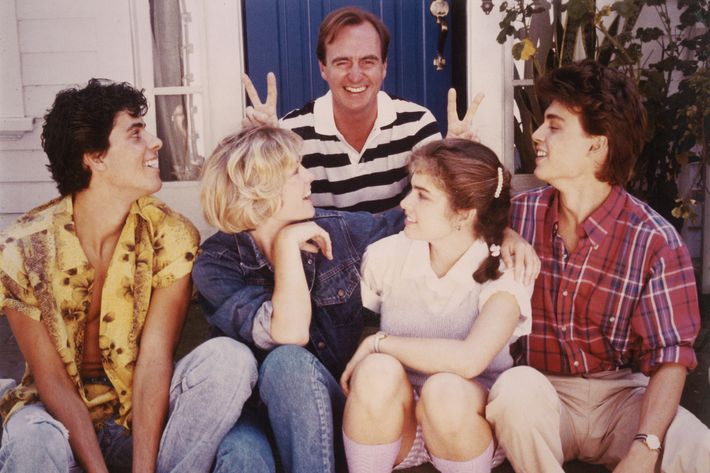
Rob Zombie (musician; horror director): I place Craven with that first wave of outlaw horror directors: him, John Carpenter, Tobe Hooper, George Romero. As kids, we never even called them “horror” movies; we called them “monster” movies. Michael Myers, Jason, and Freddy started a new wave of iconic monsters.
Craven: I couldn’t find an actor to play Freddy Krueger with the sense of ferocity I was seeking. Everyone was too quiet, too compassionate towards children. Then Robert Englund auditioned.
Robert Englund (Freddy Krueger): I was on the cusp — or thought I was on the cusp — of celebrity, the result of starring as an adorable curly haired alien in the miniseries V on NBC. V was a hit, and then got green-lit as a series. During the hiatus, the only job I auditioned for that fit my schedule was Nightmare on Elm Street. That’s the real reason I said yes.
Craven: Robert wasn’t as tall I’d hoped, and he had baby fat on his face, but he impressed me with his willingness to go to the dark places in his mind. Robert understood Freddy.
Englund: Driving over to the audition, I licked my finger and put it in the ashtray of my Datsun Roadster. That’s an old theatre trick: Ash gives you a nice shadow under the eyes. So I dabbed a little there, greased my hair back, and went in. I looked strange. I sat there and listened to Wes talk. He was tall and preppy and erudite. I posed a bit, like Klaus Kinski, and that was the audition.
Craven: A lot of horror villains used knives as weapons, and I didn’t want to duplicate that. So I thought, How about a glove with steak knives? I gave the idea to our special-effects guy, Jim Doyle.
Jim Doyle (mechanical special-effects design): I sketched a few gloves, then built a “hero” glove. You know, the sharp one. If you’re actually gonna cut something, then we use the hero. The rest of the time, we had “stunt gloves.” The hero glove was dangerous. Every time someone put it on, they hurt themselves, because if you closed your fist, the blades cut your forearm. Oops.
Englund: I sat in the barber’s chair in David Miller’s makeup shop, hours and hours of trial and error. While David poked at me with his crusty brushes, I grew more and more profane. That’s how I started to find the voice of Freddy.
Ronee Blakley (Marge Thompson): It was difficult sometimes to eat lunch with Robert because his makeup was so realistic. His brains were hanging out of his prosthetics.
Heather Langenkamp (Nancy Thompson): I was 18 years old, a freshman at Stanford, and I’d taken time off to try and make it as an actor. I’d done a TV-movie of the week, a public service announcement, and some commercials, like Tab. I wasn’t completely inexperienced.
Blakley: The movie was financed using my name and [actor] John Saxon’s name, so we were well paid. Then they used unknowns for the rest of the roles, and probably gave them scale.
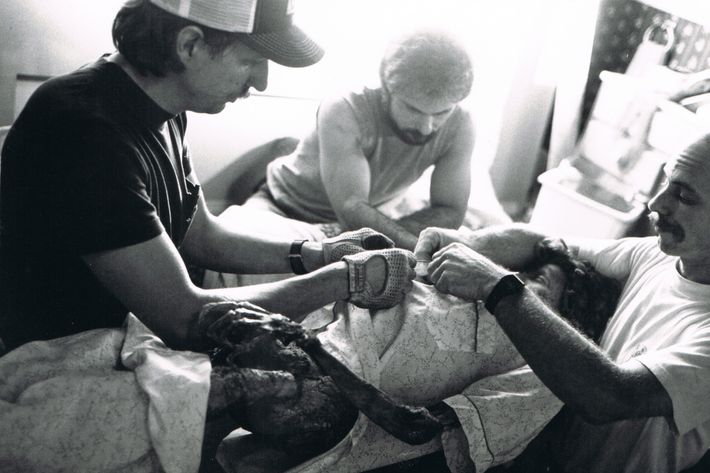
Langenkamp: Scale back then was $400 a day, maybe. I made around $12,000 or $14,000, which to me was a king’s ransom.
Jsu Garcia (a.k.a. Nick Corri; played Rod Lane): I was 19, and my life was horrible. I’d finished being homeless, and had a feeling of emptiness, so I’d do drugs. On the set of Nightmare, I snorted heroin in the bathroom. I’ve never talked about this, but I was high in the scene when I’m talking to Heather through the bars in the jail cell.
Langenkamp: On the day we shot the scene in the jail, his eyes were watery and they weren’t focused. I thought, Wow, he’s giving the best performance of his life.
Shaye: Charlie Sheen was initially cast as Heather’s boyfriend, and he wanted $3,000 a week, which we couldn’t afford.
Craven: The actor who played the coroner came to me and said, “I have a friend who’s in town. His name’s Johnny Depp, he’s in a band, and he’s interested in getting into movies.” He gave me Johnny’s headshot. I read with Johnny, and I remember his fingers were yellow from constantly smoking unfiltered cigarettes, and he was greasy and pale and sickly. My 14-year-old daughter was in from New York with a friend. I took the headshots of the actors I was considering for the role of Heather’s boyfriend, Glen. I put them out on the kitchen table, and asked the girls, “Who would you pick?” They immediately pointed at Johnny. I said, “Are you serious?” He looked like he needed a bath. They both said, “He’s beautiful.”
Englund: Johnny Depp was the most polite young actor I’ve ever worked with. He called me “sir” the first week.
Langenkamp: Johnny was very nervous. In the scene at Tina’s house, he got flustered by all the sound cues. When Tina and I are laughing in that scene, we’re totally laughing at Johnny.
Doyle: Wes said we needed to have a fantastic hook at the end of the first reel, which in those days was about 11 minutes in. So I pitched him a rotating room as a good way to kill Rod’s girlfriend Tina. He thought I was nuts. We had no budget. I thought, Well, what if we kill Heather’s boyfriend using the same set?
Craven: The revolving room — where Tina gets killed, and later, where the blood is coming out of Johnny Depp’s head — that was a real puzzle to construct. They bolted two racing car seats to the wall, one for the cinematographer and one for myself, and we were in five-point harnesses. For Johnny’s scene, 300 gallons of blood had to come out of his bed. I wanted the grips to rotate the room slowly so blood would run down the walls. But the room took off in an enormous spin from the sudden shift of weight, and blood went everywhere. It hit every light and blew every fuse. They assumed I was dead by the time it was done.
Amanda Wyss (Tina Gray): I think Tina was lost. Her dad wasn’t in the picture, her mom was drunk somewhere. And she mistook being intimate with her boyfriend Rod as some sort of love. Ultimately, having sex with Rod killed her. In horror films, the whore-y girl has to be murdered.
Englund: What’s that Frank Zappa quote? “If you realized how lame your parents were, you’d kill them in their sleep”? In Nightmare, all the adults are damaged: They’re alcoholic, they’re on pills, they’re not around. The adolescents have to wade through that, and Heather is the last girl standing. She lives. She defeats Freddy.
Langenkamp: Nightmare is a feminist movie, but I look at it more as a “youth power” film. People love that she’s a girl, but Nancy doesn’t think of herself as a girl. She’s just like, “I need to save my friends.”
Blakley: It’s the same theme as Rebel Without a Cause: disaffected youth. The parents verge on being villains.
Langenkamp: Nowadays in films, there’s a lot of care about presenting the lead female in a way that will turn guys on. With Nancy, it was the opposite. That’s why people love Nancy so much — she looks like an average teenager. She has ugly hair. She’s wearing a pair of boy’s jeans. All of her clothes are kind of pink. Like, who wears pink? Everything about her is just not right.
Shaye: Wes had written an ending where Heather vanquishes Freddy and goes off to school the next day. It’s beautiful sunshine, and that’s the end. I’d seen Friday the 13th and some other films, and there’s always a zinger at the end. There was no zinger here.
Craven: Bob wanted a hook for a sequel. I felt that the film should end when Nancy turns her back on Freddy and his violence — that’s the one thing that kills him. Bob wanted to have Freddy pick up the kids in a car and drive off, which reversed everything I was trying to say — it suddenly presented Freddy as triumphant. I came up with a compromise, which was to have the kids get in the convertible, and when the roof comes down, we’d have Freddy’s red and green stripes on it. Do I regret changing the ending? I do, because it’s the one part of the film that isn’t me.
Shaye: When I showed the film to my dad at a screening, he said, “The ending is weird.” I told him about the awkward compromise Wes and I had made. He said, “It’s not good. You gotta change it.” I said, “Dad, I can’t.” We’re in a bar, and he yells, “You’re gonna fuck up this movie!” We just left it the way it was.
Mimi Craven: The first time Wes and I saw the movie with a real audience was in New York. It was a very urban crowd. They were screaming at the screen: “Don’t go in there, you stupid white woman!” We walked out going, “Okay, this is good.”
Craven: It did very well in the first week [$1.45 million]. The second week, it did even better [$2.05 million].
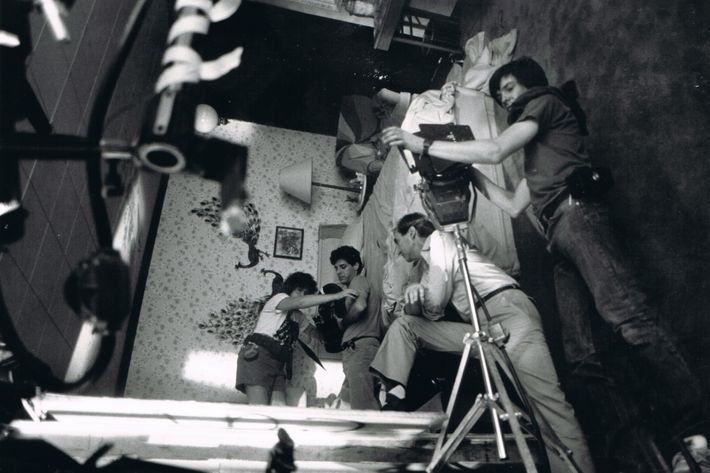
Shaye: The near-term gross of the film was $24 million. We’d had films that were successful, but nothing of that magnitude. For New Line, it was a kick-starter.
Sholder: New Line became “the house that Freddy built.”
Shaye: Wes didn’t want to direct a sequel, and he didn’t have any ongoing [financial] participation in sequels. He got mad at us. But nobody forced him to sign that contract.
Craven: I received no money from the sequels, no money from merchandising. That didn’t come until ten years later, when Bob called me: “You’ve been complaining about this and that. We’d like you to make one more Freddy film, even though we killed him off in the last sequel.” So what the hell, I took the meeting, and they offered me a cut of the merchandising and sequels retroactively.
Shaye: We made financial amends with Wes. He referred to his next house as “the house that Freddy built.”
Englund: Freddy was in Johnny Carson’s monologue every night. He was a guest VJ on MTV. Will Smith rapped about him. We became part of the culture.
Wyss: Nightmare became really popular when it was released on video. Two Halloweens later, I opened my door and there were three or four Freddies.
Englund: I was the grand marshal of the Greenwich Village Halloween parade one year, dressed in full Freddy drag. Two phenomenal-looking girls in harem costumes came up and propositioned me. I remember that particular night, they wanted me to keep the claw on.
Zombie: Horror movies are so easily discarded by Hollywood. They’re a dirty little secret. But studios have always been built on the backs of horror movies. Freddy Krueger built New Line the same way Frankenstein built Universal. The same way Saw built Lions Gate.
Englund: I didn’t make good money on Nightmare until part three. I eventually got some nice merchandising checks.
Wyss: I’m able to buy a nice bottle of wine every now and then, with the residuals.
Garcia: In the first half of the year, my residuals were $1,179. I’d love it if Shaye felt bad for me and gave me some cash.
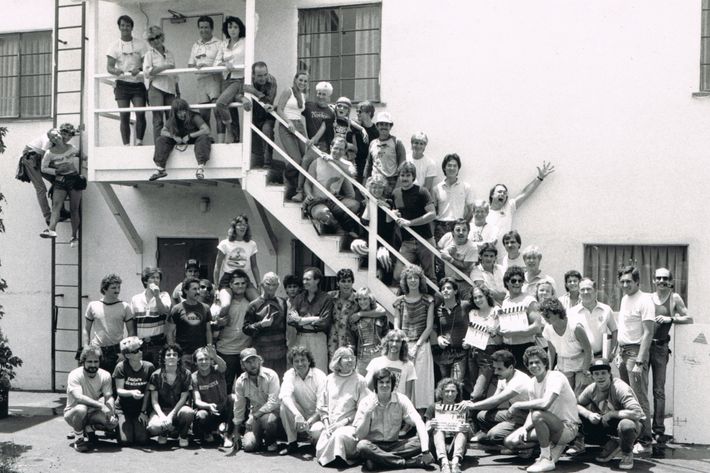
Shaye: I think Nightmare ranks very high in New Line’s hierarchy, in terms of originality and economy. It’s not Lord of the Rings, and it’s not Wedding Crashers. It has an indie, low-budget vibe, but it still holds together.
Zombie: It’s easy to forget, because Freddy Krueger turned into a lovable Halloween costume, but Nightmare on Elm Street is a dark, nasty, brutal film.
Craven: My mother never saw any of my films until she was in her late 80s, and that was Music of the Heart with Meryl Streep. Her continual plea was, “Honey, why don’t you make nice films?” She’d worked very hard to send me to college, and to her, I’d gone off and made these demented films full of violence. For many years, I felt like I’d failed the family.
Langenkamp: Doing Nightmare didn’t really help my career much because people have a stuffy mentality about horror films. I kind of feel what a porno actress might feel, trying to tell everyone how great her movie was.
Englund: After Freddy hit, it took me a while to realize how big it was. I was in New York to sign autographs at a science-fiction convention. It was me and William Shatner, and my line was out the door and down the avenue. After that, I went along for the ride. I’m happy I did, or I might have ended up doing theater in Santa Clarita.


